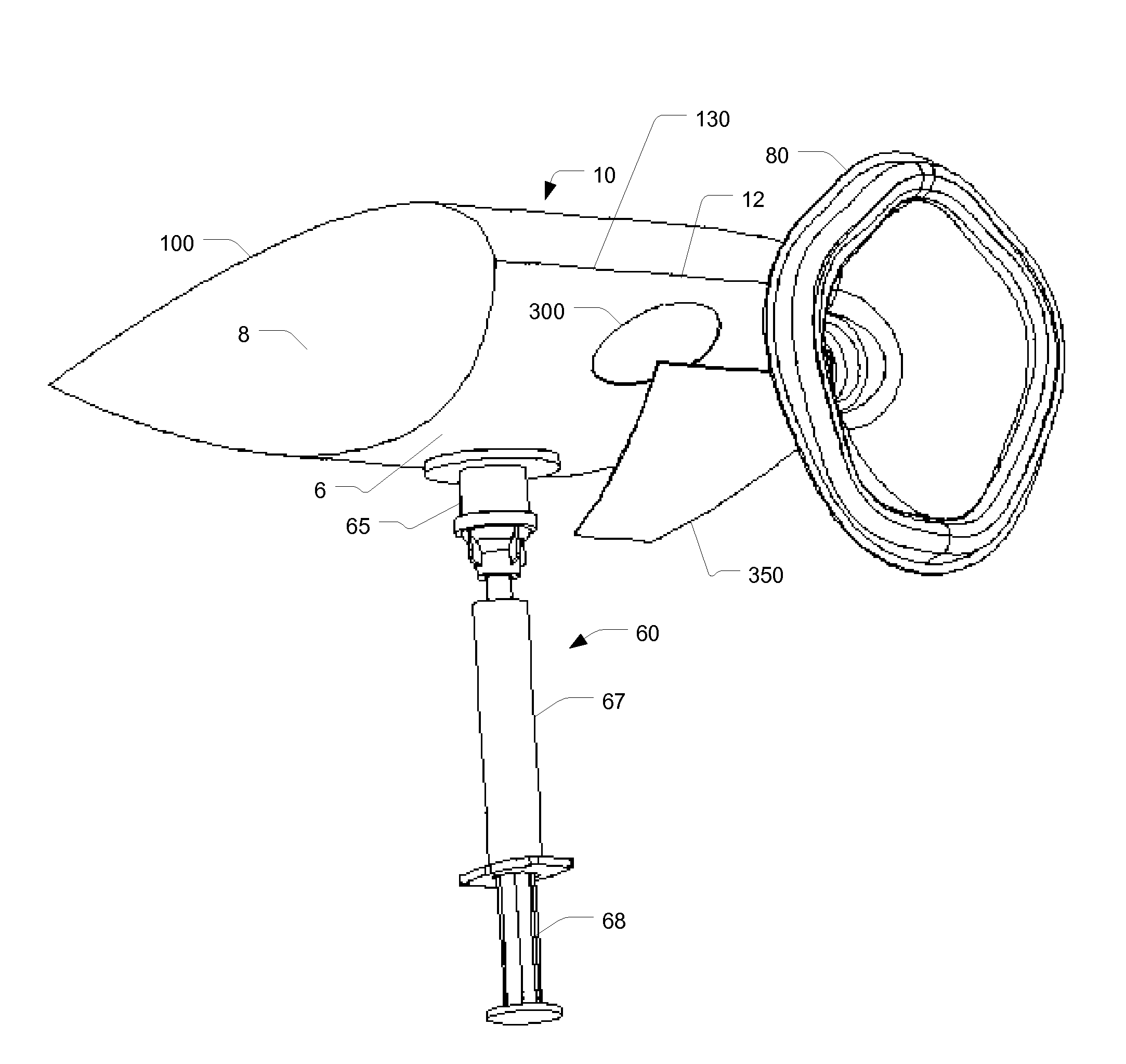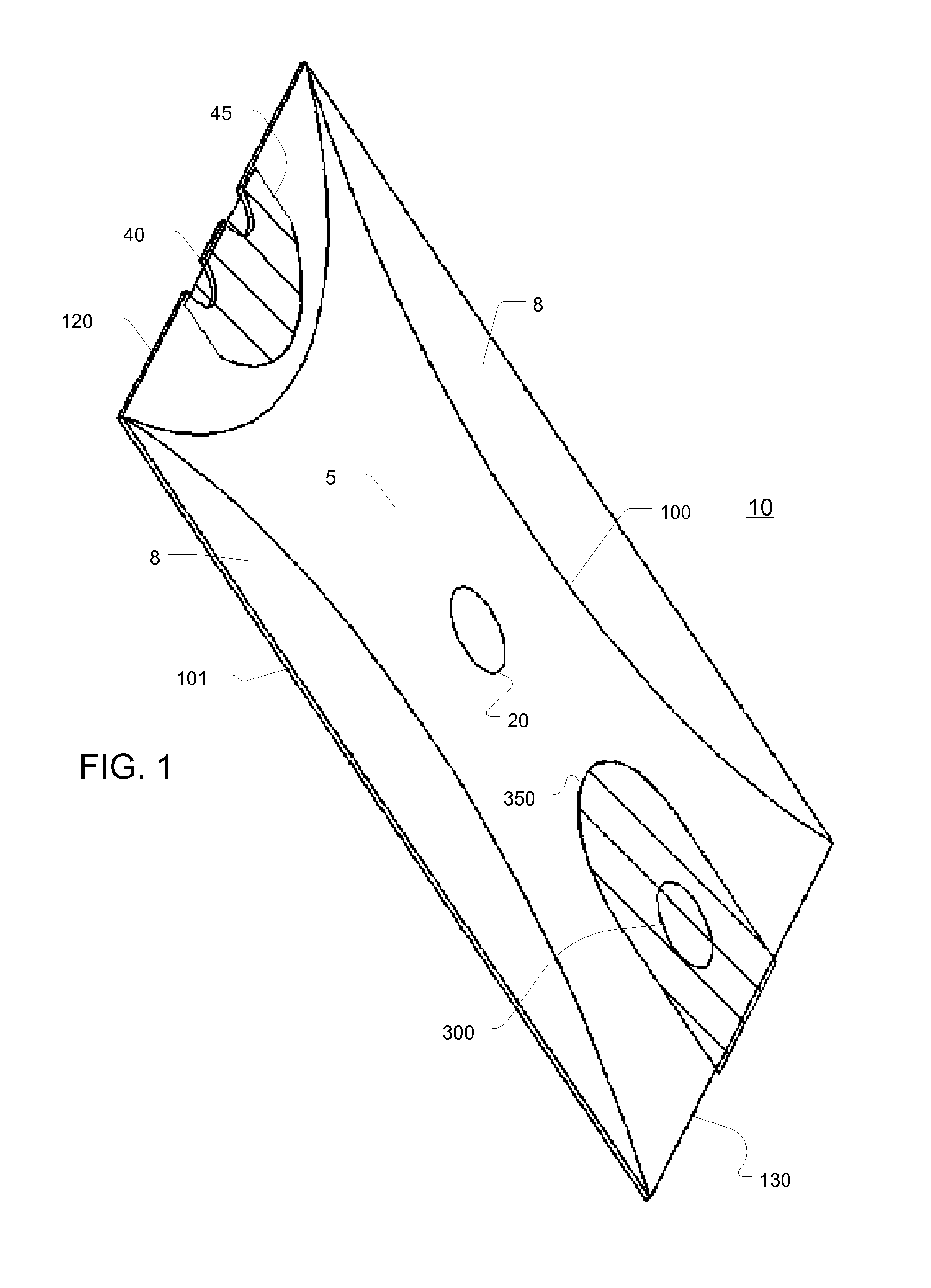Disposable spacer for inhalation delivery of aerosolized drugs and vaccines
a technology of aerosolized drugs and spacers, which is applied in the direction of respiratory masks, respirators, transportation and packaging, etc., can solve the problems of huge vaccine waste, logistical problems centered on their use, and the delivery system does not lend itself to use in the more remote regions of the world
- Summary
- Abstract
- Description
- Claims
- Application Information
AI Technical Summary
Benefits of technology
Problems solved by technology
Method used
Image
Examples
example 1
[0064]An in-vitro study was performed comparing the delivery of a dry powder dose with a commercially available cardstock device (Liteaire®). In this experiment, the powder was dispersed from the dry powder syringe-activated device into each of the two spacers. A breathing pattern was established with a breathing simulator that controlled the tidal volume, inspiratory and expiratory rates. This respiratory pattern passed through a standard in-vitro airway model (SAINT model—H. Janssens, J Aerosol Med. 14:4 433 (2001)) This was mated with a standard Cascade Impactor to quantify the amount of powder that could be delivered to the lungs, thus measuring emitted dose. This was repeated three times. Breathing rate was set at 30 times per minute in the ratio of 1:1.3 inspiration: expiration and the tidal volume was 100 ml, nominally that of a healthy two year old. The delivery time was 30 seconds and started with an inspiration. Since the same device was used to disperse the powder in both...
example 2
[0070]Using the same equipment configuration, a study was performed to evaluate the impact of breathing coordination with actuation of the device. In this test, actuation of the device either occurred as the model breathed in or as the model breathed out. Typically in adults this breathing coordination can be taught but can not be easily accomplished in young children. In this case we compare the improvement in lung dose (particles that were less than 9 microns) as a result of the invention:
Present inventionLite Aire ® SpacerImprovementInhale9.51.09XExhale7.11.84X
[0071]Thus, aspects of the invention described here provide a disposable chamber which allow for natural inhalation and exhalation by the patient. In some embodiments, the device can be maintained in a collapsed, flat configuration, suitable for bulk storage in a minimum space, and expanded immediately prior to use, after which it can be discarded or re-folded for later use by the same patient. In other embodiments, a multi...
PUM
 Login to View More
Login to View More Abstract
Description
Claims
Application Information
 Login to View More
Login to View More - R&D
- Intellectual Property
- Life Sciences
- Materials
- Tech Scout
- Unparalleled Data Quality
- Higher Quality Content
- 60% Fewer Hallucinations
Browse by: Latest US Patents, China's latest patents, Technical Efficacy Thesaurus, Application Domain, Technology Topic, Popular Technical Reports.
© 2025 PatSnap. All rights reserved.Legal|Privacy policy|Modern Slavery Act Transparency Statement|Sitemap|About US| Contact US: help@patsnap.com



